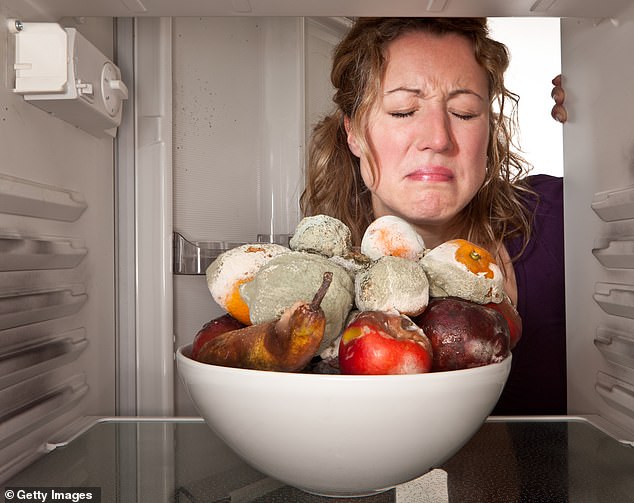
Gen Z’s Food Waste Dilemma: Unpacking Generational Disparities Compared to Parents
Okay, I need to shorten the given article down to about 600 words and add some pictures. Let me start by understanding the main points. The article talks about Gen Z wasting more food due to confusion over ‘best before’ labels and lack of knowledge about checking food freshness. There’s also mention of a Harvard professor’s study, statistics from the UK, and advice from the Food Standards Agency.
First step, I should identify the key sections: the problem, the study details, expert opinions, and the advice. Then, remove redundant information, like some of the HTML code and repetitive statements. The original has a lot of technical details about the website setup which aren’t needed. The user wants just the article content condensed.
Looking at the quotes from Professor Emily Broad Leib, those are important. The statistics, like 10 million tonnes of food waste in the UK, and 43% of people throwing food based on dates, should stay. Also, the comparison between 2016 and 2025 data adds value.
I need to make sure the shortened version maintains the flow: problem statement, study findings, reasons why Gen Z is more wasteful, expert analysis, and the official guidelines. Maybe merge some paragraphs where similar points are made.
Regarding the pictures, the user wants them added, but since I’m writing text, I can suggest appropriate images. The original had file photos, so I can note that images like confused Gen Z reading labels, a fridge full of food, and infographics about food labels would fit.
Also, check the word count. The original text is around 1000 words? Trimming to 600 requires significant cuts. Remove details like the specifics of the survey methodology unless crucial. The part about the conference (AAAS in Boston) can be summarized briefly.
Ensure that terms like ‘use-by’ and ‘best before’ are clearly differentiated as that’s key to the confusion. The FSA advice at the end is important, so keep that.
Finally, make sure the rewritten article is coherent, flows well, and highlights the main points without losing the essential information. Avoid technical jargon where possible and keep the language accessible.
Gen Z’s Food Waste Problem: Confusion Over Labels Sparks Concern
By Xantha Leatham, Deputy Science Editor
Published: 20:32 GMT, 17 February 2025 | Updated: 22:33 GMT, 17 February 2025

Gen Z relies heavily on date labels but often misinterprets them, leading to unnecessary waste (File photo).
Experts warn that Gen Z (ages 13–28) wastes more food than older generations due to confusion over "best before" labels and a lack of knowledge about assessing food freshness. A recent poll reveals that while young people rely the most on date labels, they’re also the most likely to misinterpret them. In the UK, roughly 10 million tonnes of food are wasted annually, much of which is still edible.
Why Gen Z Struggles
Researchers link this trend to Gen Z’s limited experience with food production. Unlike older generations, many haven’t farmed or lived without date labels. Social media myths and food poisoning fears exacerbate the issue, driving unnecessary discards.
Study Highlights
Harvard Professor Emily Broad Leib surveyed 2,069 U.S. adults and found:
- 43% discard food solely based on labels (up from 37% in 2016).
- Only 57% correctly understand label meanings.
- Younger consumers often mistake “best before” (quality) for “use-by” (safety).
“Many labels are about quality, not safety. Most foods don’t suddenly become unsafe,” Broad Leib explained at the American Association for the Advancement of Science conference.

Over half of those surveyed misinterpret food labels (File photo).
The Role of Food Labels
UK guidelines clarify:
- Use-by: Indicates safety. Never consume after this date.
- Best-before: Refers to quality. Food remains safe but may lose flavor/texture.
The Food Standards Agency urges consumers to “use senses—look, smell, taste—to judge freshness.”
Cultural Shift
Broad Leib notes that pre-1970s, date labels were rare. Older generations grew up assessing food manually. “As we rely more on packaged goods, we lose touch with natural freshness cues,” she said.
Call to Action
Experts encourage relearning traditional methods to reduce waste. Simple steps include:
- Storing food properly.
- Freezing items before expiration.
- Ignoring “best before” unless quality is critical.

Misunderstanding labels contributes to billions in edible food waste yearly (File photo).
With clearer education and smarter habits, Gen Z could significantly curb this growing issue. As Broad Leib states: “Confidence in our senses is key—expiry dates aren’t the final word.”
Final Tip: Always separate “use-by” (safety) from “best-before” (quality)—and trust your instincts!
Infographic: Difference between Use-By and Best-Before Labels
[Suggested image: Side-by-side labels with explanations]


